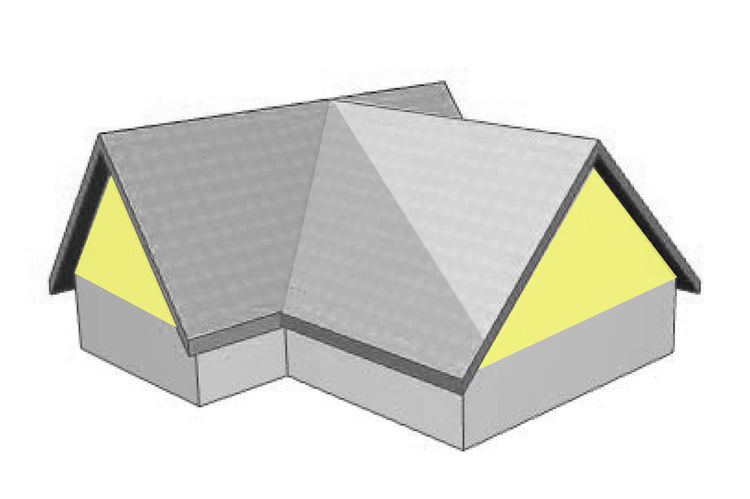 | ||
A gable is the generally triangular portion of a wall between the edges of intersecting roof pitches. The shape of the gable and how it is detailed depends on the structural system used, which reflects climate, material availability, and aesthetic concerns. A gable wall or gable end more commonly refers to the entire wall, including the gable and the wall below it.
Contents
A variation of the gable is a crow-stepped gable, which has a stairstep design to accomplish the sloping portion.
Gable ends of more recent buildings are often treated in the same way as the Classic pediment form. But unlike Classical structures, which operate through trabeation, the gable ends of many buildings are actually bearing-wall structures. Thus, the detailing can be ambiguous or misleading.
Gable style is also used in the design of fabric structures, with varying degree sloped roofs, dependent on how much snowfall is expected.
Sharp gable roofs are a characteristic of the Gothic and classical Greek styles of architecture.
The opposite or inverted form of a gable roof is a V-roof or butterfly roof.
Front-gabled and side-gabled
While a front-gabled building faces the street with its gable, a side-gabled building faces it with its cullis, meaning the ridge is parallel to the street. The terms are used in architecture and city planning to determine a building in its urban situation.
Front-gabled buildings are considered typical for German city streets in the medieval gothic period, while later Renaissance buildings, influenced by Italian architecture are often side-gabled. In America, front-gabled houses as the Gablefront house were popular primarily between the early 19th century and 1920.
Wimperg
A wimperg is a German and Dutch word for a Gothic ornamental gable with tracery over windows or portals, which were often accompanied with pinnacles. It was a typical element in Gothic Architecture especially in cathedral architecture. Wimpergs often had crockets or other decorative elements in the Gothic style. The intention behind the wimperg was the perception of increased height.
Drawbacks
The gable end roof is a poor design for hurricane regions, as it easily peels off in strong winds. The part of the roof that overhangs the triangular wall very often creates a trap that can catch wind like an umbrella. Winds blowing against the gable end can then exert tremendous pressure, both on the triangular wall and on the roof edges where they overhang the triangular wall, causing the roof to peel off and even the triangular wall to cave in.
